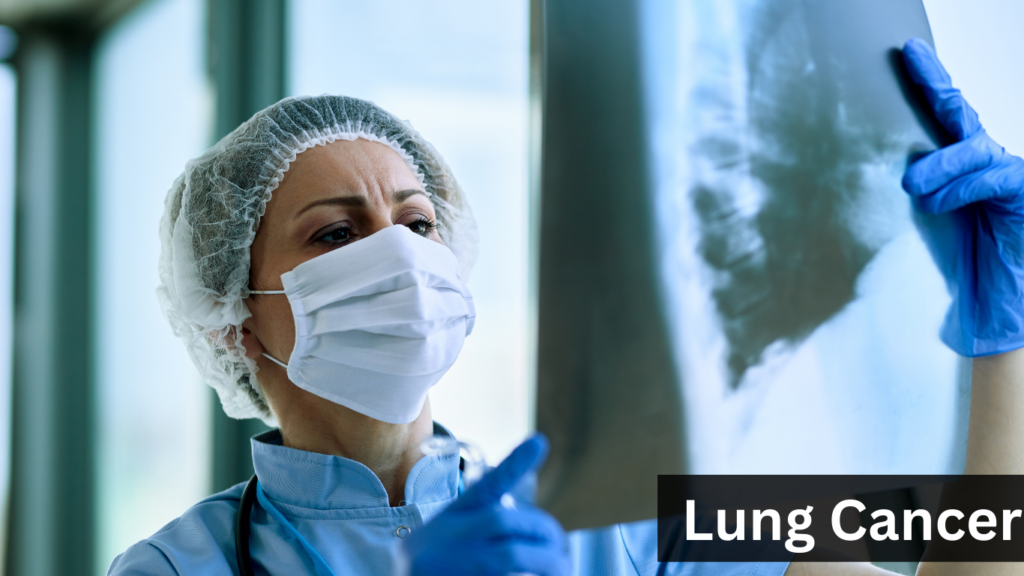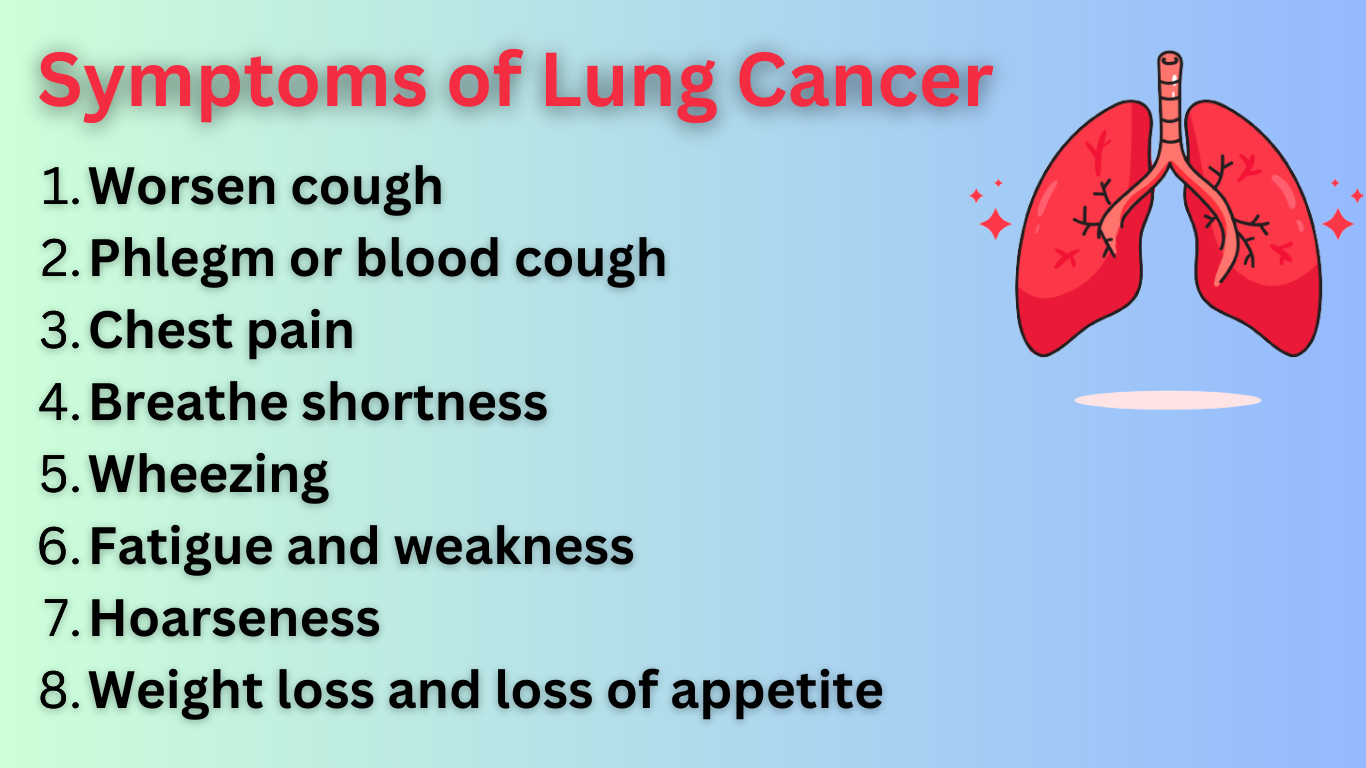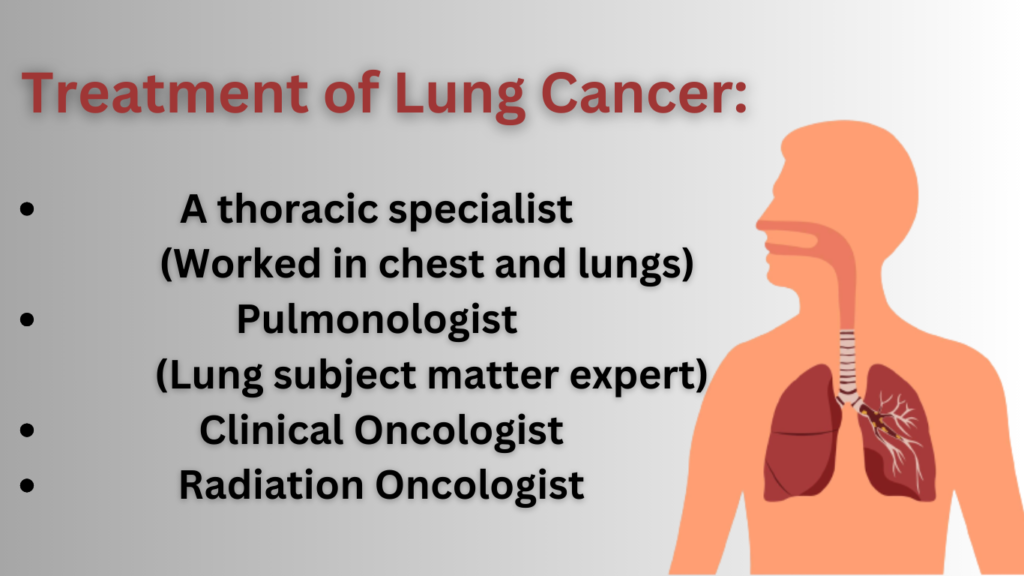Lungs Specialist Doctor In Jaipur
Lung Cancer and its types
Lung cancer is a malignant tumor that arises in the lung cells, and it is one of the most prevalent and deadly cancer types. While it can originate in different parts of the lungs, the most common sites are the bronchi, the airways that connect the windpipe (trachea) to the lungs. Lung cancer is categorized into two primary types, and obtaining the appropriate treatment, including Lungs Specialist Doctor In Jaipur, is of utmost importance.

Non-Small Cell Lung Cancer (NSCLC):
Non-Small Cell Lung Cancer (NSCLC) is the most prevalent type of lung cancer, accounting for about 85% of all cases. It can be further divided into several subtypes.– Adenocarcinoma: This subtype often develops in the outer part of the lungs and is more frequently diagnosed in non-smokers. It tends to exhibit slower growth, which may facilitate early-stage diagnosis.
– Squamous Cell Carcinoma: Squamous cell carcinoma typically originates in the bronchial tubes and is frequently associated with a history of smoking.
– Large Cell Carcinoma: Large cell carcinoma can manifest in various lung regions and is often characterized by more aggressive growth.
Small Cell Lung Cancer (SCLC):
Small Cell Lung Cancer (SCLC) is less common but known for its aggressive and rapid growth, making it a challenging form of lung cancer. It often originates in the bronchi and exhibits a strong tendency to metastasize quickly to other parts of the body, including the lymph nodes, liver, and bones. SCLC is closely linked to tobacco smoking.
Jaipur, known for its advanced medical facilities and specialists, offers lungs specialist doctor in jaipur to cater to the unique needs of patients. The choice of treatment may depend on the type and stage of lung cancer. It can include surgery, chemotherapy, radiation therapy, targeted therapy, immunotherapy, or a combination of these approaches.
YOU HAVE A QUERY ?
You are just a call away!
Lung Cancer Stages: lungs specialist doctor in jaipur
These stages help in treatment guide by revealing the spread level of cancer. If lung cancer is diagnosed at an early stage, before it spreads, then there are high chances of successful treatment.
However, the early symptoms of lung cancer are common and unnoticeable therefore, it is noticed when it has been already spread.

There are four main stages in NSCLC:
The cancer is in the lung and near lymph nodes.
In the lung plus lymph node in the middle of the chest.
In lymph nodes, but on the same side of the chest where it firsts starts growing.
Spread to lymph nodes on the opposite side of the chest.
Both lungs and other distant organs.
There are two stages in SCLC: Limited and Extensive.
In the limited stage, cancer is only in one lung or in lymph nodes on the same side of the chest.
In the extensive stage, cancer spreads to a single lung, or opposite lung, lymph on the opposite side and nearby lungs. It may be spread to bone marrow and other organs
The patient may experience respiratory infections such as pneumonia or bronchitis.
There are symptoms that occur as cancer spreads in the body. Such as:
- In lymph nodes: Cause lumps in the neck or collarbone
- Bones: bone pain in the back, ribs, and hips.
- In brain or spine: Dizziness, headache, numbness in arms or legs.
- In liver: Jaundice

There could be symptoms in the facial expression of a person, such as drooping of one eyelid, small pupil, or lack of perspiration on the single side of the face. This happens when the tumors are at the top of the lungs and affect facial nerves.
The other factors for lung cancer are:
- Taking in perilous substances for an extensive stretch of time.
- Openness to asbestos cause Mesothelioma (A sort of cellular breakdown in the lungs).
- Substances like arsenic, cadmium, nickel, oil based goods, and uranium, additionally cause cellular breakdown in the lungs.
Lung Cancer Diagnosis:
Imaging tests: It incorporates tests like X-beam, X-ray, CT, and PET sweeps, to get the nitty gritty and minute pictures inside the body.
Sputum Cytology: On the off chance that you are creating mucus while hacking, a tiny assessment can help in deciding the presence of disease cells.
There is a biopsy which can figure out if the growth cells are harmful. A tissue test is gotten by:
Bronchoscopy: During sedation, a light cylinder is gone through your throat into the lungs for closer assessment.
Mediastinoscopy: The specialist plays out an entry point at the foundation of the neck. A few lit instruments and careful devices are utilized to take tests from lymph hubs.
These tissue tests are then shipped off pathologists for investigation.
Treatment of Lung Cancer:
If your diagnostic test results are positive then you would be treated by a team of doctors including:

The treatment for NSCLC depends from one individual to another, and on the wellbeing subtleties of a person.
Stage 1: In this, medical procedure is performed to eliminate a piece of the lung. Chemotherapy might be required assuming that there are chances of reoccurrence.
Stage 2: Either a piece of the lung or all might be taken out. Chemotherapy is suggested.
Stage 3: In this, the patient requires, a mix of chemotherapy, medical procedure, and radiation therapy.
Stage 4 is exceptionally difficult to fix. The choices are chemotherapy, medical procedure, target treatment, and immunotherapy.
The choices for SCLC incorporate a medical procedure, chemotherapy, and radiation treatment. Much of the time, the malignant growth level is excessively best in class for a medical procedure.





